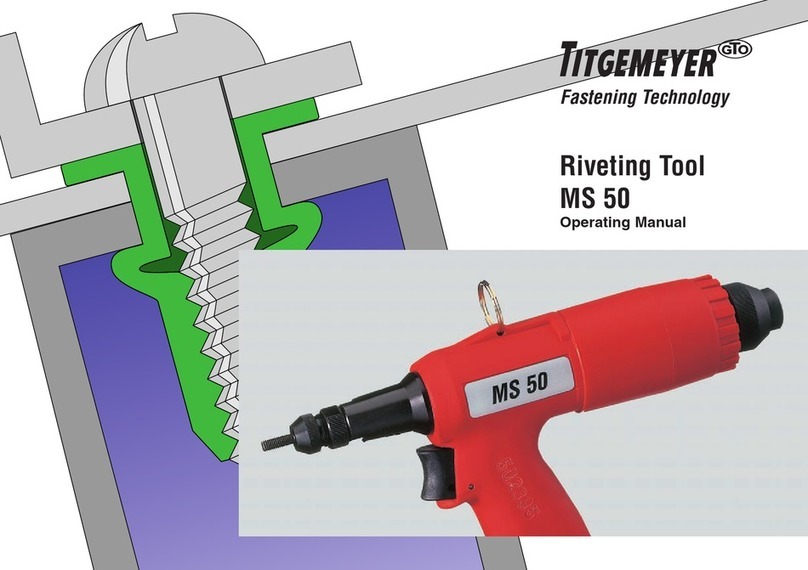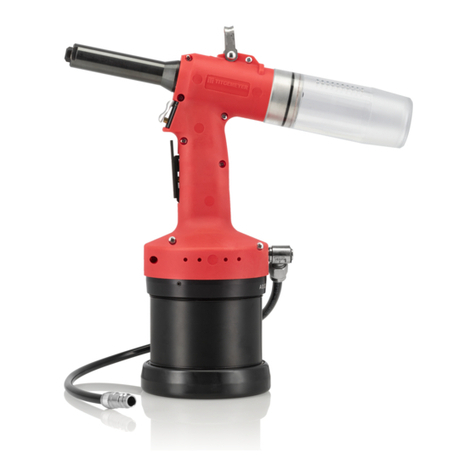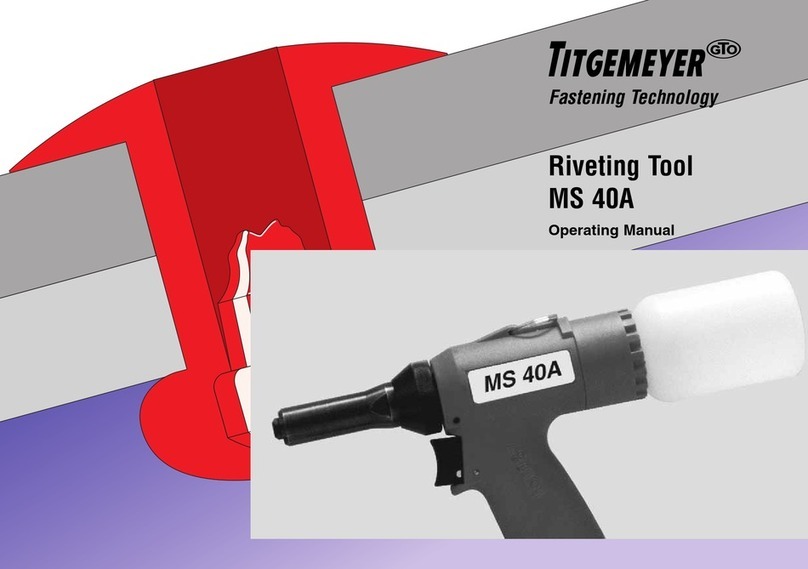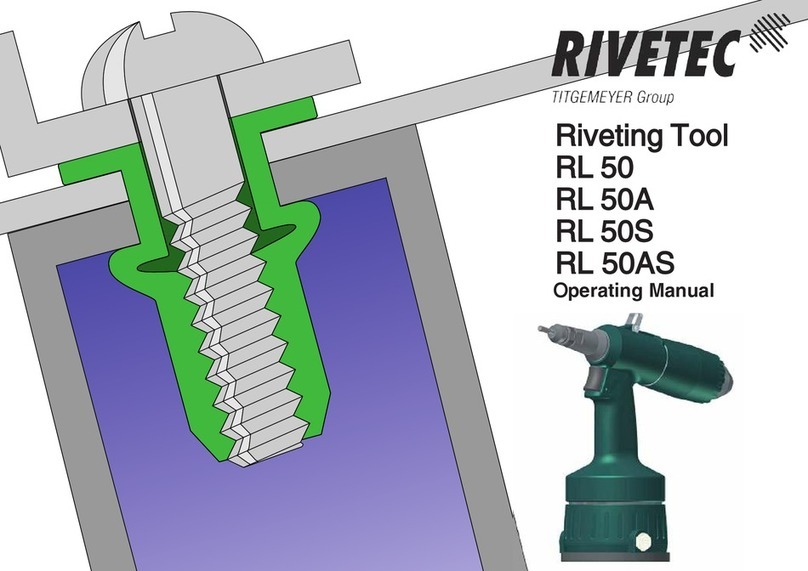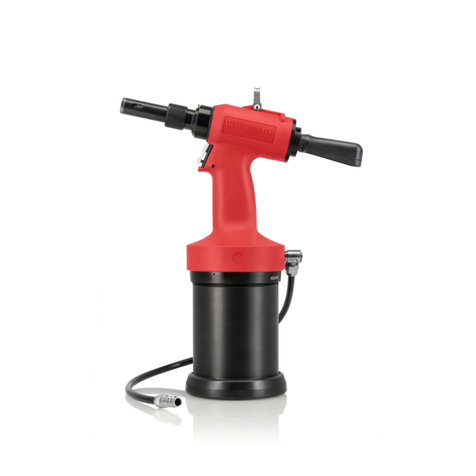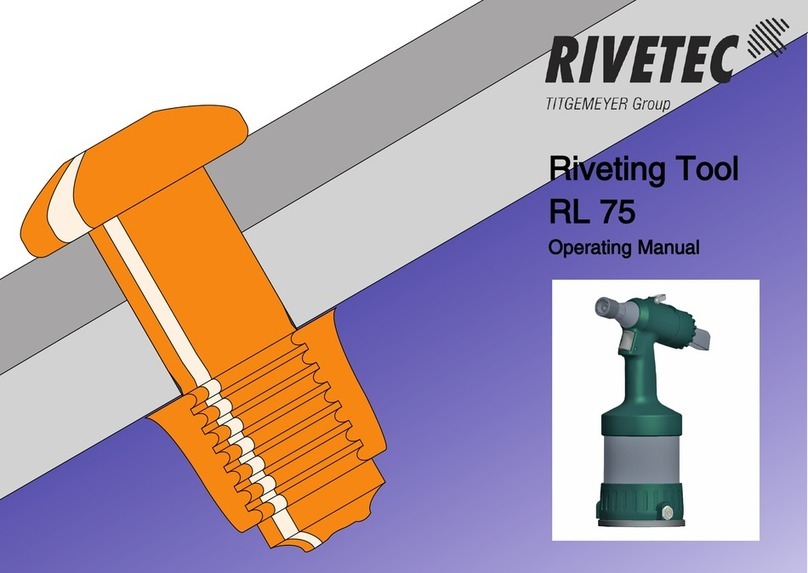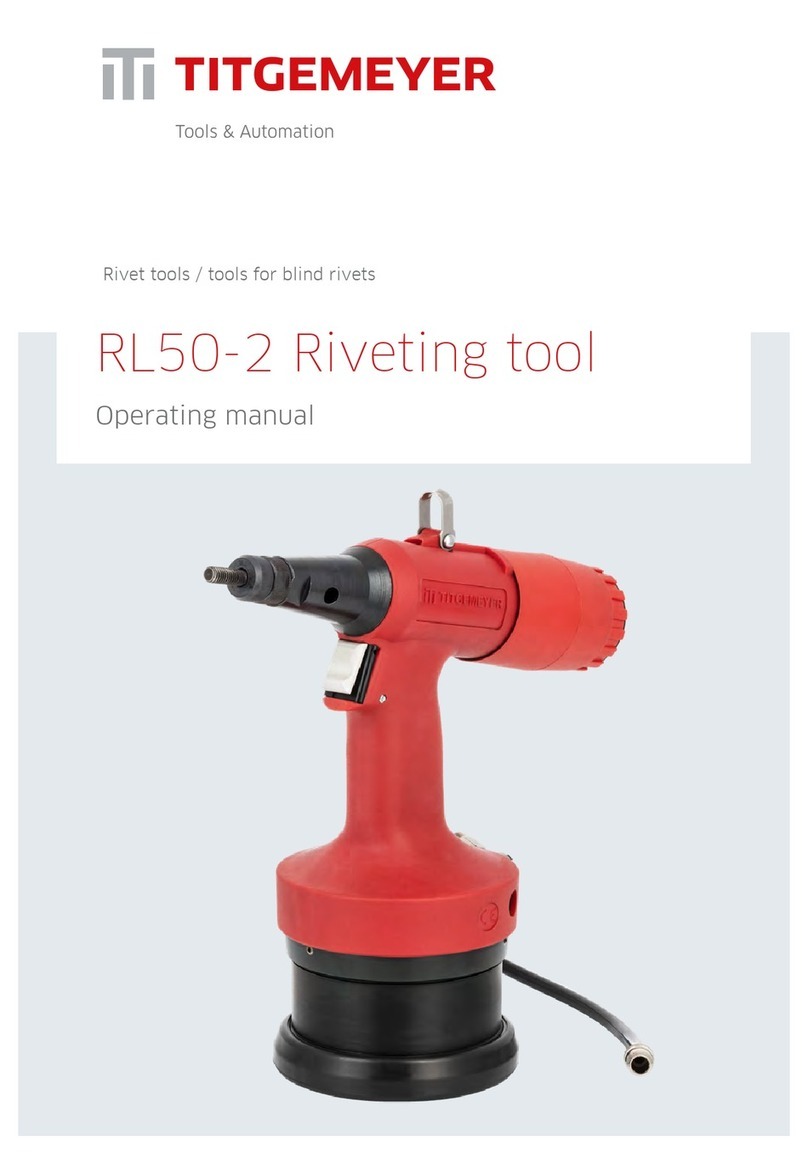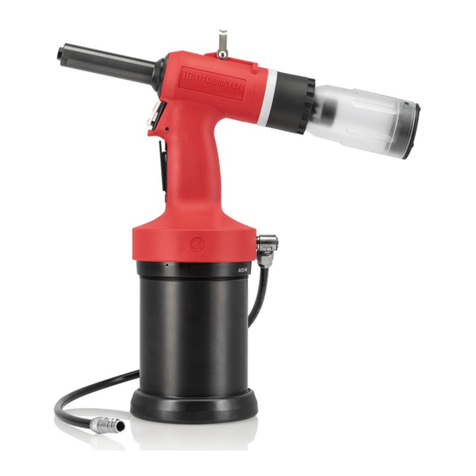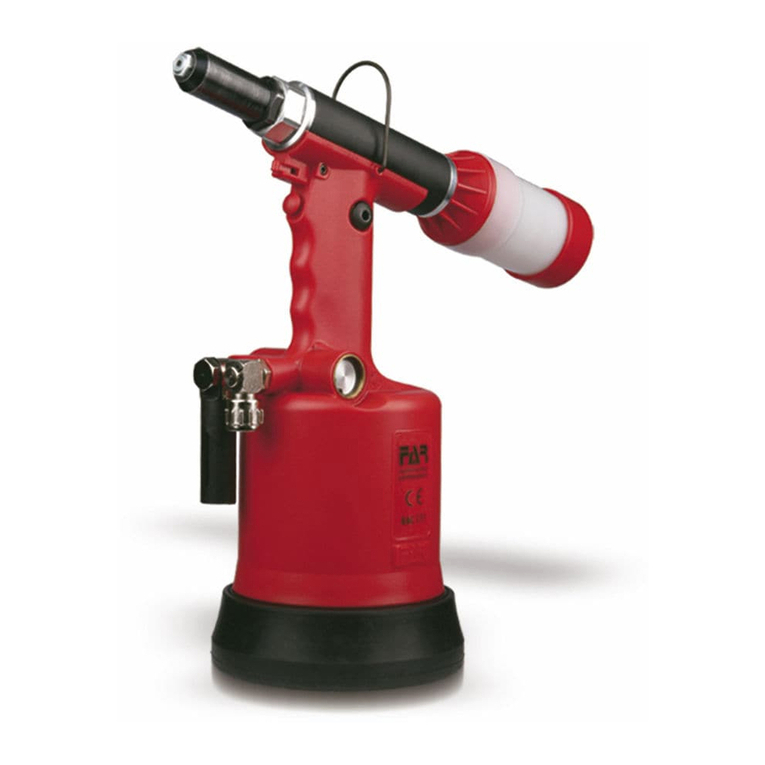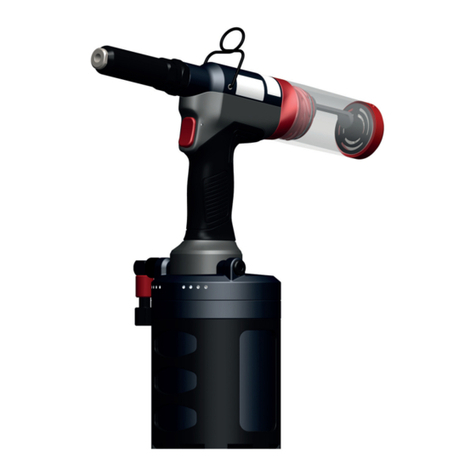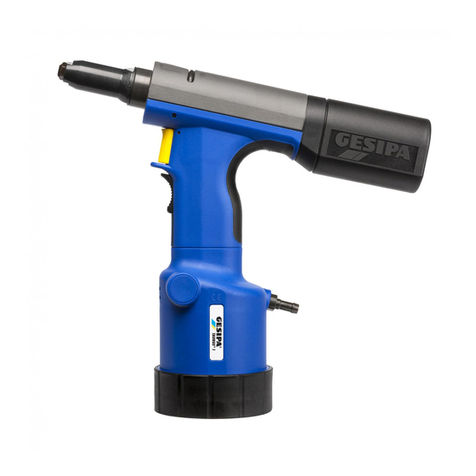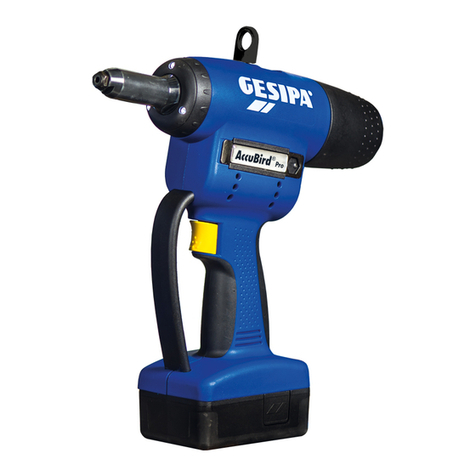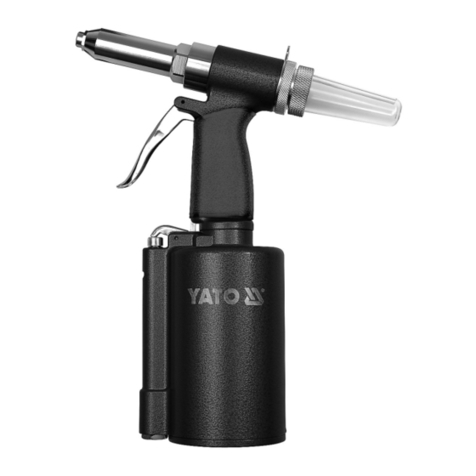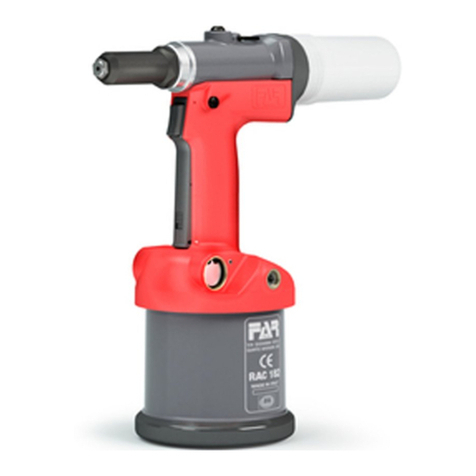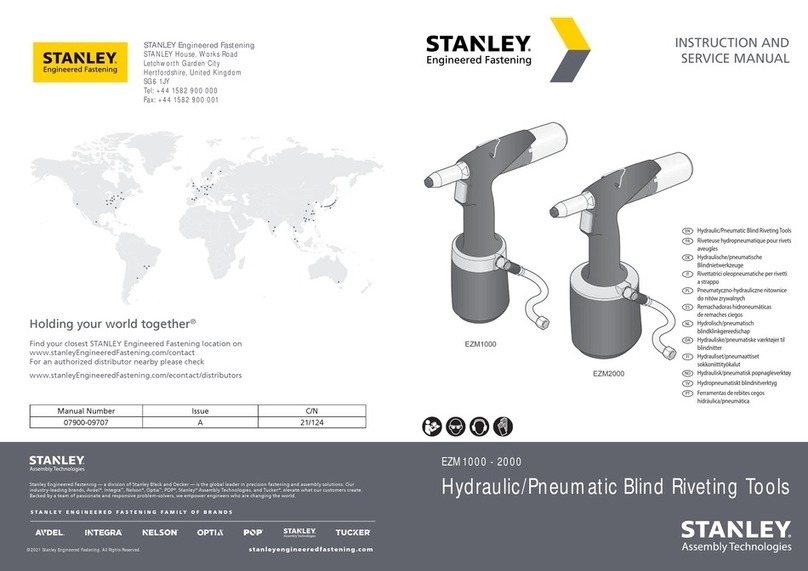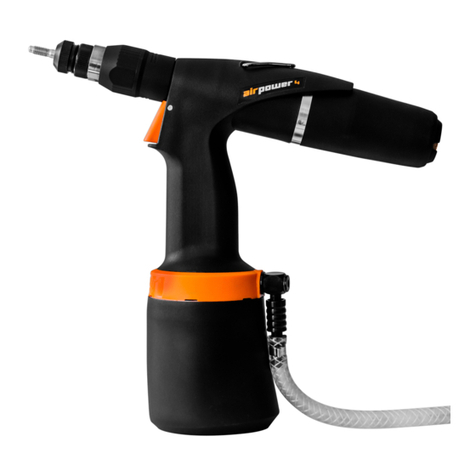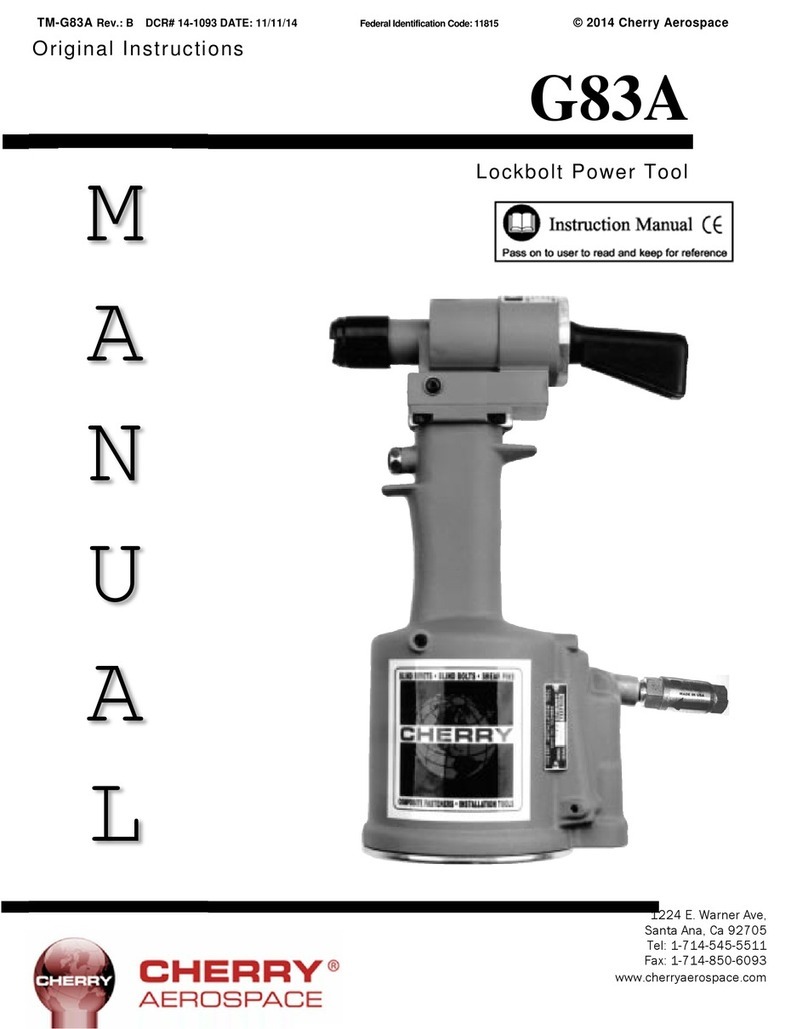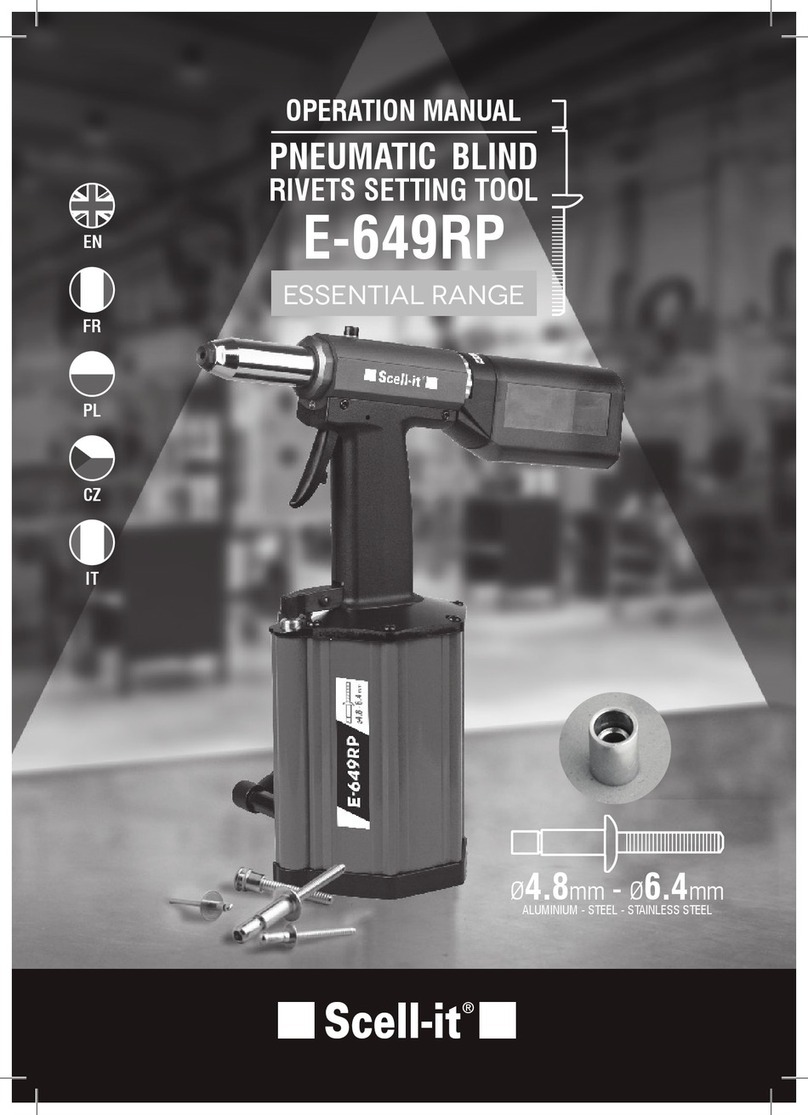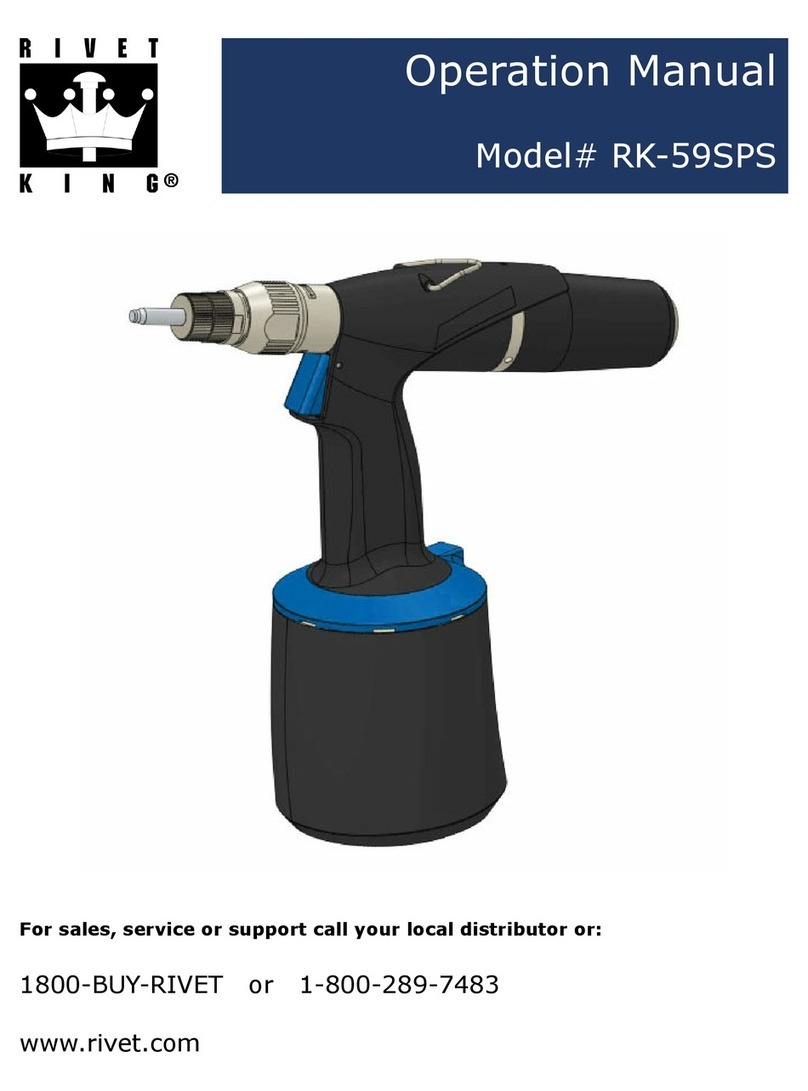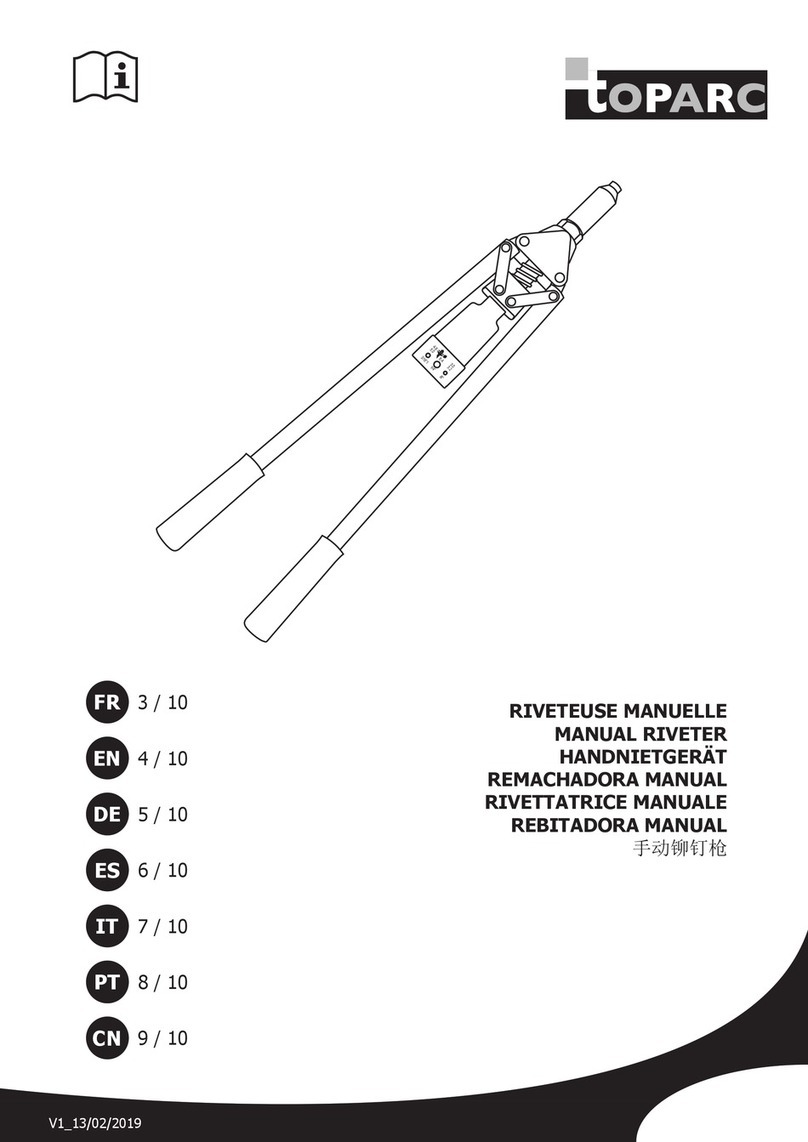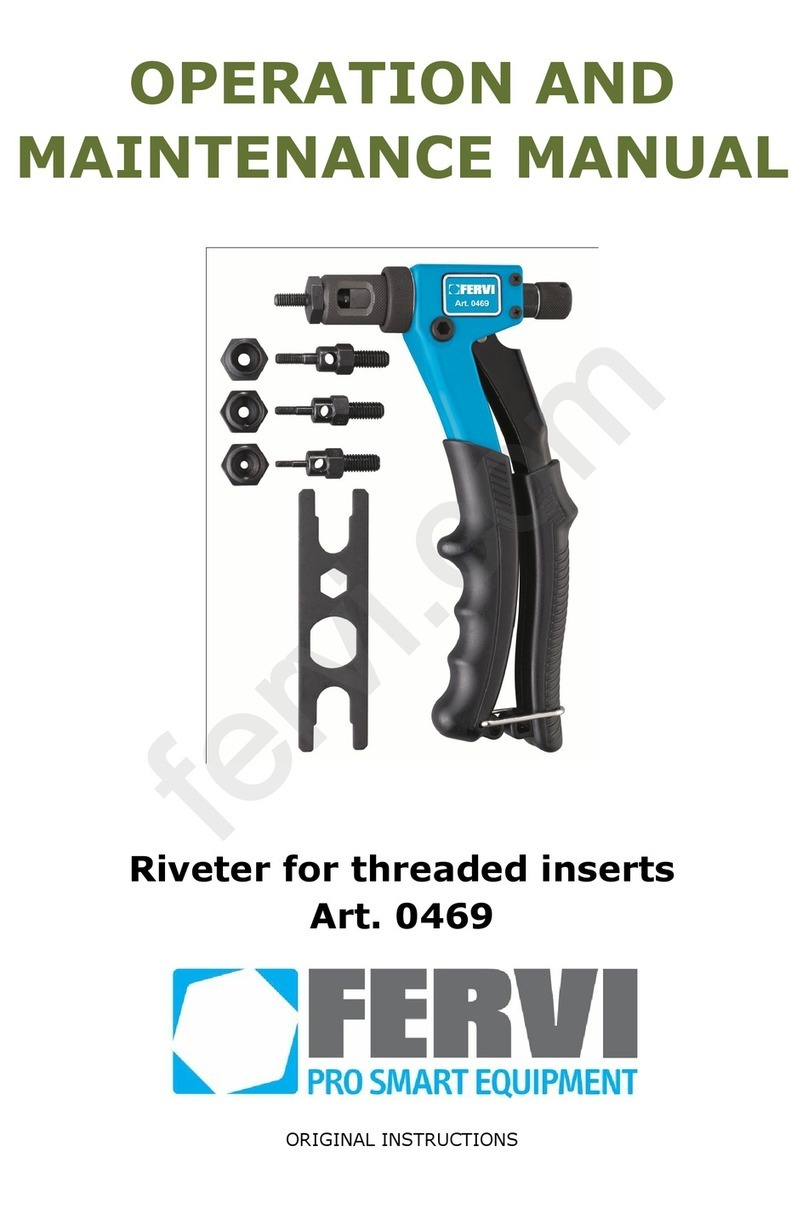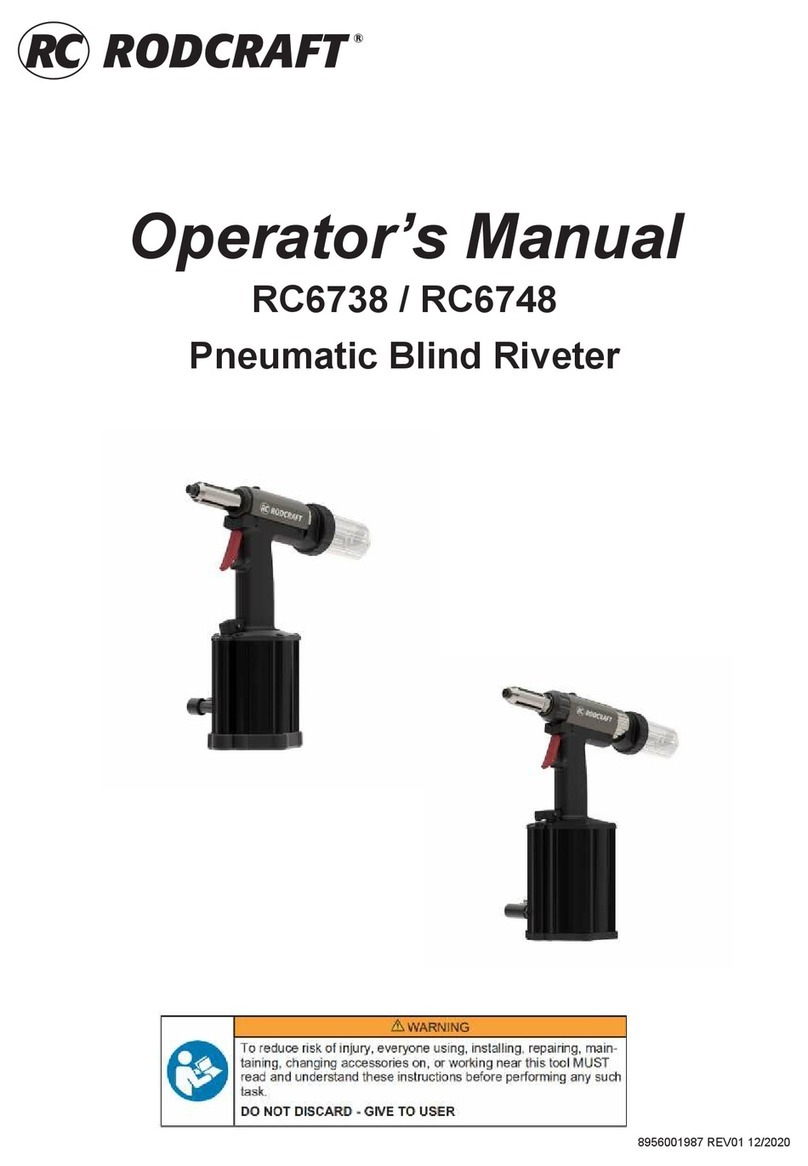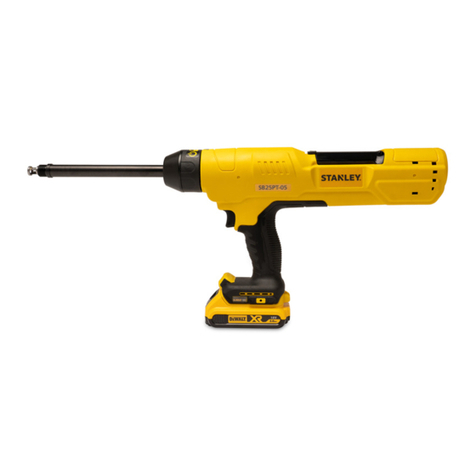
6
RL100-2 / Manual
Titgemeyer / 10370EN0523 / 1
English
Aside from the general directions outli-
ned in this segment concerning both the
tool and its use, additional safety ins-
tructions may be provided throughout
this document in respect of individual
items or components.
5. Safety measures
Fundamental safety measures for pre-
venting damage and injuries.
Improper use of the tool may result in
personal injury or property damage. To
avoid damage or injury, always follow
the corresponding safety instructions
and take the necessary safety precauti-
ons. Any maintenance, service or repair
work performed on the tool must only
be carried out by suitably qualied
personnel.
6. Specic safety instructions
This riveting tool has been designed
exclusively for installing blind rivet nuts
and blind rivet studs. The customer shall
be solely responsible for any modicati-
ons that are made to the riveting tool!
IMPORTANT!
— Do not use this tool before reading
and understanding these operating
instructions.
— Do not operate this tool if you are
unwell, if you have taken any form of
medication, or are under the inuence
of alcohol.
— Do not use the tool if parts are mis-
sing or there is discernible mechanical
damage.
— Never aim the riveting tool at any
individuals and only operate it when
in contact with a work piece.
— Only use the riveting tool within a
working temperature range of 5 °C to
no more than 45 °C.
— A maximum operating pressure of 7
bar must not be exceeded.
— Should the air pressure exceed the
max. 7-bar limit, use the appropriate
equipment to reduce it.
— Only use ttings and hoses with an
operating pressure rating of 10 bar
(compressed air).
— Prior to adjusting the tool settings or
replacing any components, always
disconnect the riveting tool from the
compressed air line.
— The recommended threaded man-
drels/internal threaded mandrels and
nosepieces must be chosen depending
on the blind rivet nut/blind rivet stud
diameters concerned.
— The prescribed personal protective
equipment should be used/worn at all
times.
— If not in use, the tool must always be
disconnected from the compressed air
supply.
— The tool must only be used to install
rivets.
— Do not use the tool without a nose-
piece and tted threaded mandrel/
internal threaded mandrel (5).
